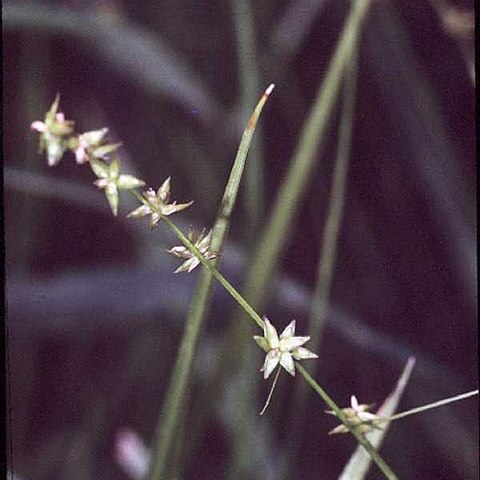Stems tufted, aphyllopodic, 2–9 dm, smooth; lvs 3–5 per stem, all in the basal third, shorter than to about equaling the stems, plicate, 1–2.5 mm wide; spikes (2)3–6, sessile, contiguous or ± remote, small and few-fld, the terminal one with a conspicuous, slender, staminate base, some of the lateral ones often wholly pistillate; bracts small and inconspicuous; anthers 0.6–1.4 mm; perigynia mostly 5–15, crowded, widely spreading or the lower reflexed, green or tan, planoconvex, coriaceous and shining, spongy-thickened at base, 4–12-nerved dorsally, nerveless or occasionally few-nerved ventrally, ovate or triangular-ovate, 2.2–3.2 × 1.1–1.8 mm, 1.4–2 times as long as wide, tending to be ± convexly tapered from the widest point to the beak, conspicuously serrulate-margined distally and on the beak, this short, broad, very shallowly bidentate, 0.5–1 mm, a fourth to half as long as the body; achene lenticular; 2n=54. Swamps, bogs, and other wet places; Nf. and Lab. to s. Yukon and Alas., s. to Va., Mo., and Mex.


